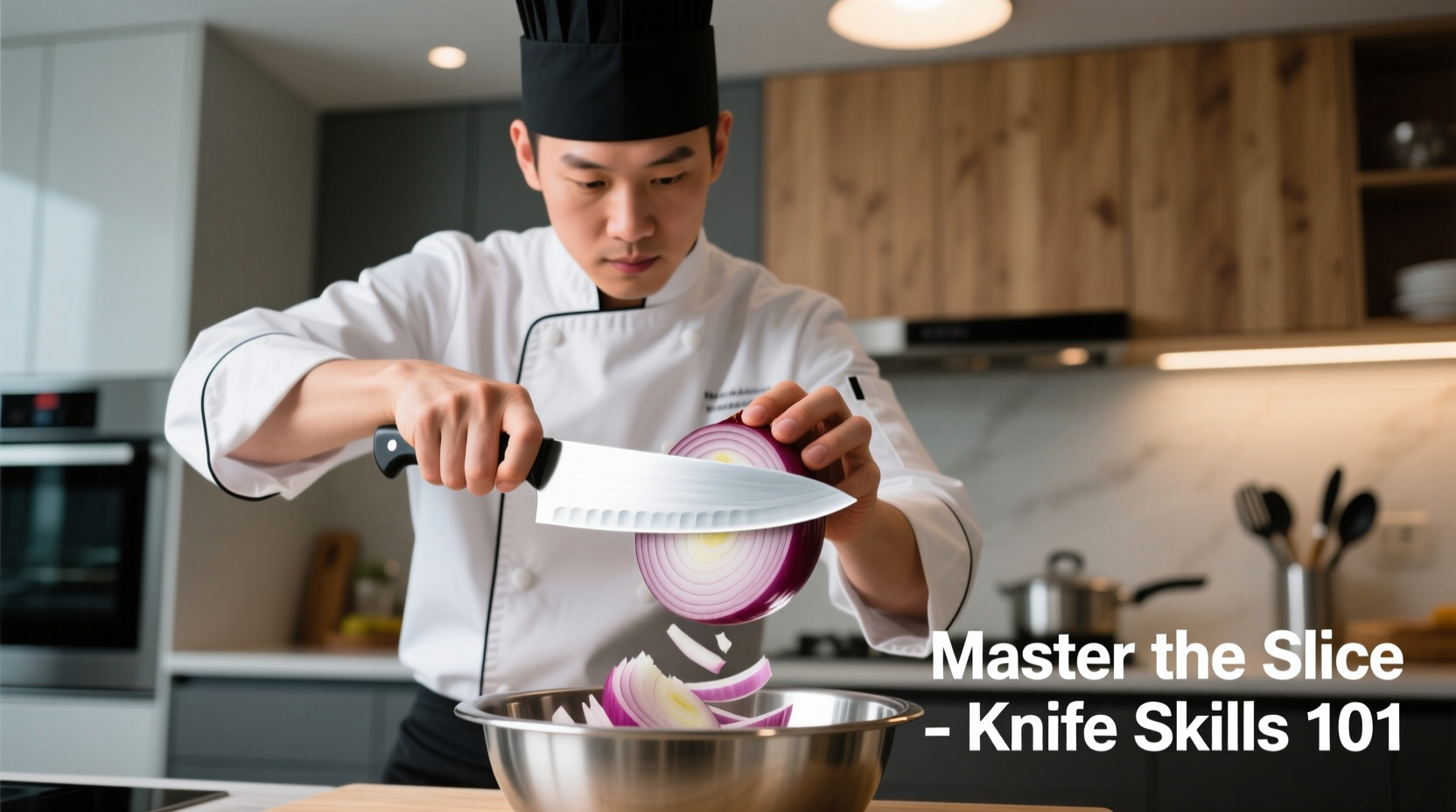Master Onion Slicing: Professional Techniques for Home Cooks
Whether you're preparing a French onion soup or a fresh salsa, knowing how to slice an onion properly transforms your cooking experience. Most home cooks struggle with uneven pieces, wasted onion, and the dreaded onion tears. After analyzing techniques from culinary schools and professional kitchens, we've identified the most efficient method that delivers perfect results every time.
Why Proper Onion Slicing Matters
Incorrect onion slicing leads to inconsistent cooking, wasted ingredients, and unnecessary frustration. When pieces vary in size, some burn while others remain raw. The American Culinary Federation emphasizes that uniform slicing ensures even flavor distribution and proper cooking times in recipes. Professional chefs spend years perfecting this fundamental skill because it impacts nearly every savory dish.
Essential Tools for Perfect Onion Slices
You don't need expensive equipment, but the right tools make a significant difference:
- Sharp chef's knife (8-10 inches) - Dull knives crush onion cells, releasing more tear-inducing compounds
- Cutting board - Wood or plastic with non-slip base
- Bowl of water - For discarding onion scraps
- Damp towel - To wipe hands between cuts

Step-by-Step: The Professional Onion Slicing Method
Preparation Phase
- Cut the onion in half vertically from root to stem end
- Peel both halves, removing the papery skin and first layer
- Place cut-side down on your cutting board for stability
Slicing Technique
- Make horizontal cuts toward the root (don't cut through root)
- Make vertical cuts from stem toward root (again, preserving root)
- Rock your knife through the onion with the tip anchored at the root
- Repeat for the second half
This technique preserves the onion's structure until the final cut, minimizing cell damage that causes tears. The Food Science Department at Cornell University confirms that limiting cell disruption reduces syn-propanethial-S-oxide release—the compound responsible for eye irritation.
| Slicing Method | Best For | Time Required | Tear Production |
|---|---|---|---|
| Professional Rocking Method | Sauces, soups, stir-fries | 45-60 seconds | Low |
| Basic Chop | Salads, garnishes | 75-90 seconds | Moderate |
| Mandoline Slicer | Salads, pickling | 30-45 seconds | Very Low |
| Food Processor | Salsas, relishes | 20-30 seconds | None |
Minimizing Tears: Science-Backed Strategies
While no method eliminates tears completely, these evidence-based approaches significantly reduce discomfort:
- Cut near running water - The USDA recommends this technique as water molecules bind with irritants
- Chill onions for 30 minutes before cutting - Cold temperatures slow enzyme reactions
- Use a sharp knife - Creates cleaner cuts with less cell damage
- Cut under a vent - Directs fumes away from your face
- Wear kitchen-safe goggles - Creates a physical barrier against irritants
Specialized Slicing Techniques
Different recipes require different cuts. Master these variations using the same foundational technique:
Dicing Onions
For even 1/4-inch cubes ideal for salsas and mirepoix: After making horizontal and vertical cuts, angle your knife slightly while rocking to create uniform cubes. The Culinary Institute of America teaches this method to ensure consistent cooking in foundational recipes.
Julienned Onions
For stir-fries and Asian dishes: Make thin lengthwise slices (1/8 inch) without cutting through the root, then rotate 90 degrees for crosswise cuts. This creates matchstick pieces that cook quickly without burning.
Ring Slices
For burgers and sandwiches: Place whole onion on cutting board, slice perpendicular to the equator. For thicker rings, cut from pole to pole. Keep the root intact until final slices for better structural integrity.
Avoiding Common Mistakes
Even experienced cooks make these errors that compromise results:
- Slicing through the root first - Causes onion to fall apart, creating uneven pieces
- Using a dull knife - Increases tear production by 40% according to University of California research
- Cutting too quickly - Leads to inconsistent sizes and potential injury
- Not stabilizing the onion - Creates dangerous slipping hazards
- Washing after cutting - Dilutes flavor and creates soggy texture
Storing Sliced Onions Properly
Maximize freshness with these storage techniques:
- Store in airtight container in refrigerator for up to 7 days
- Place paper towel in container to absorb excess moisture
- Never store near potatoes - ethylene gas accelerates spoilage
- Freeze for long-term storage (up to 6 months) in single layers
According to FDA food safety guidelines, cut onions should not be left at room temperature for more than two hours to prevent bacterial growth.
When to Use Alternative Methods
While the professional knife method works for most situations, consider these alternatives:
- Mandoline slicer - For perfectly uniform slices in large quantities (use guard for safety)
- Food processor - When speed matters more than precision (pulse carefully)
- Specialty onion choppers - Good for beginners but often create uneven pieces
Remember that mechanical methods sacrifice some texture control but save time for large batches. The James Beard Foundation notes that professional texture development often requires manual knife work rather than mechanical processing.











 浙公网安备
33010002000092号
浙公网安备
33010002000092号 浙B2-20120091-4
浙B2-20120091-4